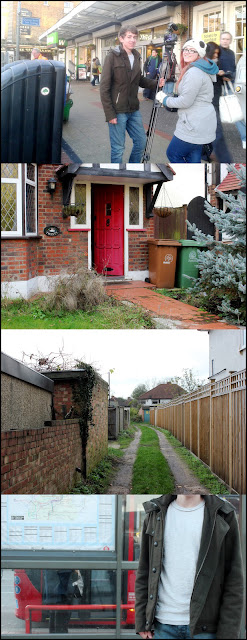 We stayed in one area location (between Carshalton and Sutton) to get this days shots. Any other shots that we need for our film would require travelling around via train, which would be rather expensive to do for two days when we could just film everything in 1 day.
We stayed in one area location (between Carshalton and Sutton) to get this days shots. Any other shots that we need for our film would require travelling around via train, which would be rather expensive to do for two days when we could just film everything in 1 day.This days shoot included bus footage, of which was quite difficult to produce at good quality. We had to take multiple shots and attempts during these travelling scenes, with production members constantly getting on and off of buses in order to create the shots we needed.
For example, if we wanted a scene of our actor getting on the bus, beeping his Oyster card, walking towards his seat and sitting down, we could not just film this it in one take. This is because there would be no angle variety, no shots of the expression on our actors face and there would also be a larger possibility of either being told to stop filming (regardless to the fact if we had permission or not) or members of the public on the bus watching the camera holder following our actor. It would also be very jumpy and not contain any of the shots that we desired or planned.
However, regardless to the difficulty and large effort we had to put into this shoot, one of the positive points of our second shoots was the weather. We were lucky enough to have weather that was exactly what we wanted for our film; dry, light and overcast. This weather made all of our shots look exactly how we wanted them; clear, cold yet 'normal'. We didn't want anything too dramatic (such as a storm or snow) but then we also didn't want something that was massively positive or optimistic (such as sunshine or rainbows).
Throughout the shoot, we only really had tiny problems. One of the main problems was if ever a member of the public looked into the camera during filming. We only noticed these wandering eyes during our overview of the clips, however we will try our best and find a way to cut out any noticeable 'curious' people during post-production.

































